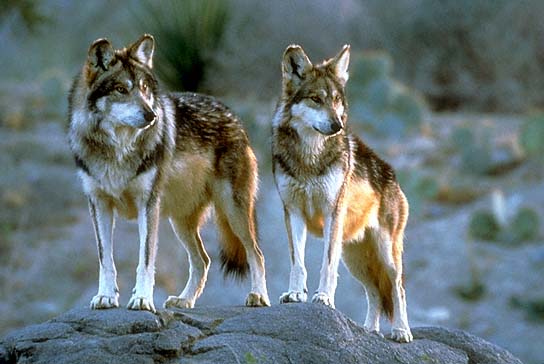Editorial: Agriculture’s Misnamed Agency
 There is a unit within the Agriculture Department’s Animal and Plant Health Inspection Service called Wildlife Services. Its official mission, according to its Web site, is “to resolve wildlife conflicts to allow people and wildlife to coexist.” This has meant, since 2000, some two million dead animals. The list includes coyotes, beavers, mountain lions, black bears and innumerable birds. The agency’s real mission? To make life safer for livestock and game species.
There is a unit within the Agriculture Department’s Animal and Plant Health Inspection Service called Wildlife Services. Its official mission, according to its Web site, is “to resolve wildlife conflicts to allow people and wildlife to coexist.” This has meant, since 2000, some two million dead animals. The list includes coyotes, beavers, mountain lions, black bears and innumerable birds. The agency’s real mission? To make life safer for livestock and game species.
There will obviously be times when livestock and predators come into conflict, when coyotes kill lambs and black bears become too accustomed to humans and cause genuine harm. But Wildlife Services’ lethal damage is broad and secretive, according to a series in The Sacramento Bee last year. The techniques are old-fashioned — steel traps and cyanide cartridges — and the result, according to a new study in the Journal Conservation Letters, is a program that is wasteful, destructive to the balance of ecosystems and, ultimately, ineffective.
Under one name or another — for years it was part of the Interior Department — the agency has been doing its work as quietly as possible, though not without protest from Congress, scientists and members of the public who got wind of what was going on. Two House members — John Campbell, a California Republican; and Peter DeFazio, an Oregon Democrat — have pressed for Congressional hearings and have asked the Agriculture Department’s inspector general to investigate Wildlife Services.
The agency, opponents say, has not scientifically evaluated the consequences of its actions and has consistently understated the damage it does to “nontarget” species, like songbirds. Its work also undercuts other programs intended to protect the balance of natural ecosystems.
It is time the public got a clear picture of what Wildlife Services is up to, and time for the Department of Agriculture to bring the agency’s work into accord with sound biological practices. Resolving wildlife conflicts need not involve indiscriminate killing.
This editorial was published by the New York Times.
***************************************************************************************************************************************************
Please write a letter to the editor today, thanking the New York Times for this editorial and calling for an end to the wasteful, brutal practices of Wildlife Services. The letters to the editor page is one of the most widely read, influential parts of the newspaper. One letter from you can reach thousands of people and will also likely be read by decision-makers.
Some suggested points to include are below, but please write in your own words, from your own experience. Start by thanking the paper for the editorial.
- We should all join contact our members of Congress and join Congressmen Campbell and DeFazio in calling for serious investigation and changes to the operations of Wildlife Services.
- It is unacceptable for a federal agency to engage in the wholesale slaughter of animals, including endangered species and pets. The two million animals killed since 2000 include more than 50,000 non-target animals, including family pets and federally protected golden eagles, killed with indiscriminate tools such as traps, snares and poison.
- This program carries an enormous expense for taxpayers, destroys our nation’s wildlife, and disrupts the balance of our wild lands. Currently, Wildlife Services spends over $100 million annually to kill more than one million animals.
- The US Department of Agriculture’s own statistics http://usda.mannlib.cornell.edu/MannUsda/viewTaxonomy.do?taxonomyID=29 show that most livestock losses come from weather, disease, illness, and birthing problems, not predation. Despite this, Wildlife Services continues to “preventatively” kill more than 100,000 native carnivores each year http://www.aphis.usda.gov/wildlife_damage/prog_data/2009_prog_data/data_index_2009.shtml, even when the effectiveness of such killing is counterproductive.
- Wildlife Services can and should immediately end one of the cruelest, most hazardous and environmentally harmful killing methods— the use of two deadly predator poisons, Compound 1080 and sodium cyanide M-44 devices.
- A range of proven-effective nonlethal deterrence methods and assistance with their implementation are available to livestock businesses. These are infinitely preferable to the wholesale slaughter of native carnivores that is impacting entire ecosystems.
Your letter should be no longer than 150 words, must refer to the editorial, and must include your name, address and phone numbers. The NY Times will not accept attachments. Letters can be submitted by e-mailing letters@nytimes.com or faxing (212) 556-3622.
Thank you for acting for wolves and other native carnivores today!
___________________________________________________________________________________________________
Click here to join our email list for Mexican gray wolf updates and action alerts.
Visit us on Facebook here.



